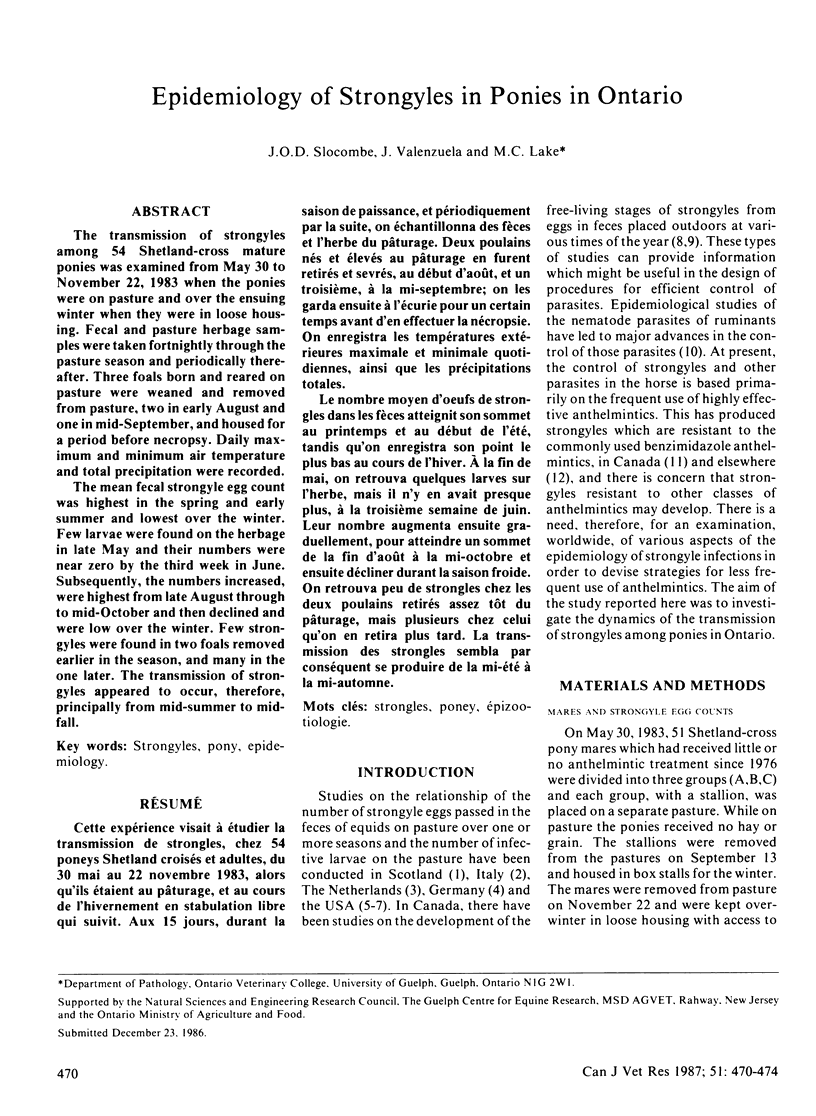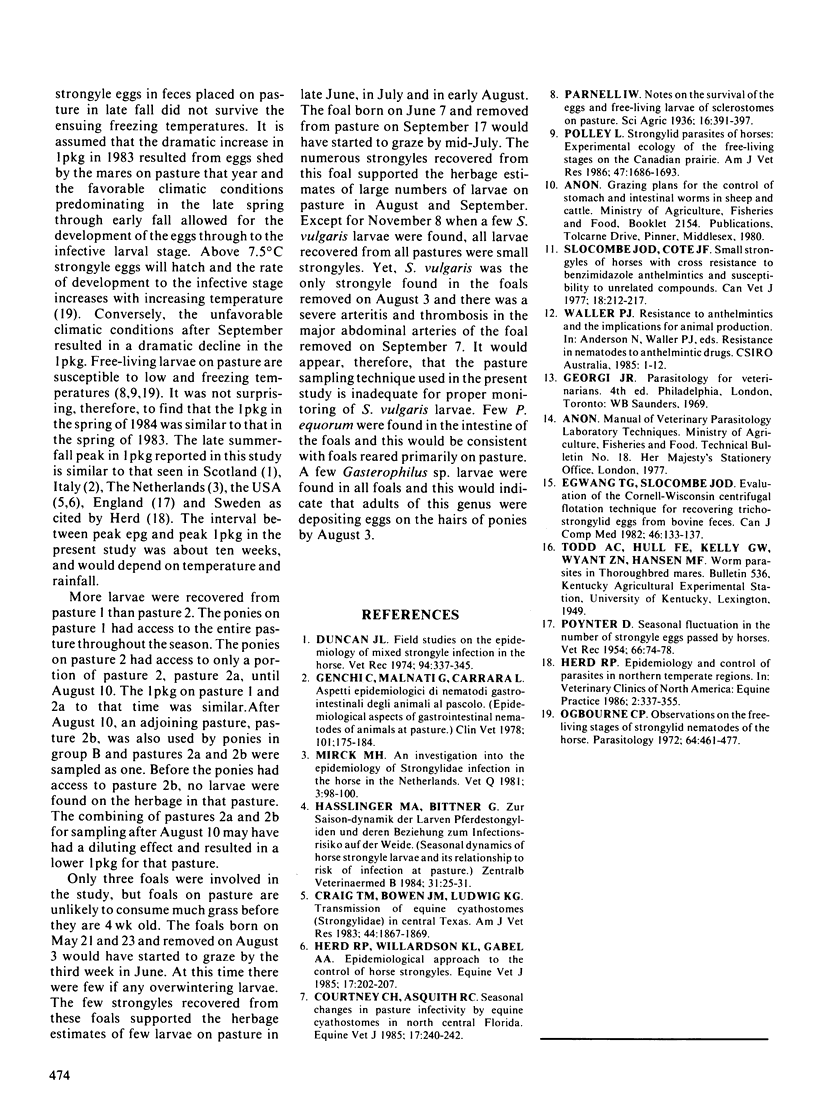Abstract
The transmission of strongyles among 54 Shetland-cross mature ponies was examined from May 30 to November 22, 1983 when the ponies were on pasture and over the ensuing winter when they were in loose housing. Fecal and pasture herbage samples were taken fortnightly through the pasture season and periodically thereafter. Three foals born and reared on pasture were weaned and removed from pasture, two in early August and one in mid-September, and housed for a period before necropsy. Daily maximum and minimum air temperature and total precipitation were recorded. The mean fecal strongyle egg count was highest in the spring and early summer and lowest over the winter. Few larvae were found on the herbage in late May and their numbers were near zero by the third week in June. Subsequently, the numbers increased, were highest from late August through to mid-October and then declined and were low over the winter. Few strongyles were found in two foals removed earlier in the season, and many in the one later. The transmission of strongyles appeared to occur, therefore, principally from mid-summer to mid-fall.
Full text
PDF




Selected References
These references are in PubMed. This may not be the complete list of references from this article.
- Courtney C. H., Asquith R. L. Seasonal changes in pasture infectivity by equine cyathostomes in north central Florida. Equine Vet J. 1985 May;17(3):240–242. doi: 10.1111/j.2042-3306.1985.tb02483.x. [DOI] [PubMed] [Google Scholar]
- Craig T. M., Bowen J. M., Ludwig K. G. Transmission of equine cyathostomes (Strongylidae) in central Texas. Am J Vet Res. 1983 Oct;44(10):1867–1869. [PubMed] [Google Scholar]
- Duncan J. L. Field studies on the epidemiology of mixed strongyle infection in the horse. Vet Rec. 1974 Apr 13;94(15):337–345. doi: 10.1136/vr.94.15.337. [DOI] [PubMed] [Google Scholar]
- Egwang T. G., Slocombe J. O. Evaluation of the Cornell-Wisconsin centrifugal flotation technique for recovering trichostrongylid eggs from bovine feces. Can J Comp Med. 1982 Apr;46(2):133–137. [PMC free article] [PubMed] [Google Scholar]
- Herd R. P. Epidemiology and control of parasites in northern temperate regions. Vet Clin North Am Equine Pract. 1986 Aug;2(2):337–355. doi: 10.1016/s0749-0739(17)30720-4. [DOI] [PubMed] [Google Scholar]
- Herd R. P., Willardson K. L., Gabel A. A. Epidemiological approach to the control of horse strongyles. Equine Vet J. 1985 May;17(3):202–207. doi: 10.1111/j.2042-3306.1985.tb02470.x. [DOI] [PubMed] [Google Scholar]
- Mirck M. H. An investigation into the epidemiology of Strongylidae infections in the horse in the Netherlands. Vet Q. 1981 Apr;3(2):98–100. doi: 10.1080/01652176.1981.9693804. [DOI] [PubMed] [Google Scholar]
- Ogbourne C. P. Observations on the free-living stages of strongylid nematodes of the horse. Parasitology. 1972 Jun;64(3):461–477. doi: 10.1017/s0031182000045534. [DOI] [PubMed] [Google Scholar]
- Polley L. Strongylid parasites of horses: experimental ecology of the free-living stages on the Canadian prairie. Am J Vet Res. 1986 Aug;47(8):1686–1693. [PubMed] [Google Scholar]
- Slocombe J. O., Cote J. F. Small strongyles of horses with cross resistance to benzimidazole anthelmintics and susceptibility to unrelated compounds. Can Vet J. 1977 Aug;18(8):212–217. [PMC free article] [PubMed] [Google Scholar]


